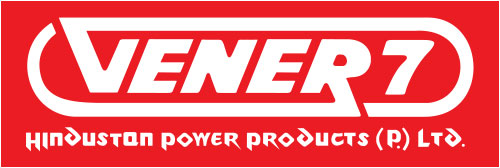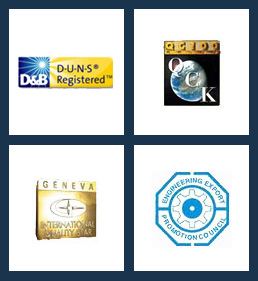FAQs
Advice and guidance on how to ensure to select the most appropriate power protection System at a cost efficient price.
If an organization/individualis not familiar with choosing the right Power Protection system for their needs, it can be a daunting and at times frustrating task. Over engineering the solution can be very expensive. Selecting a system that does not address all of their identified power problems or considering locally available resources, can so easily cause waste of money. - For those unfamiliar in the selection process it is essential that they: - Know clearly their own requirements - Know the right questions to ask to a potential supplier - Know the advantages and disadvantages of the various design types - To assist in choosing the most appropriate and cost efficient solution to solve power quality problems, we offer advice and guidance on ten of the most frequently asked questions.
For electrical systems to function properly, it is necessary to make sure that the quality of the power feeding them is of a sufficient quality to ensure that performance is not impaired or system life expectancy is not reduced. Without the proper power an electrical device or load may malfunction, fail prematurely or not operate at all. There are many ways in which electric power can be of poor quality and many more causes of such poor quality
To identify the most appropriate solution it is always recommended to first source/identify exactly the problems being experienced. For that reason it is necessary to monitor the supply over a period of time to identify the types, duration and magnitude of power problems experienced. Power supply problems are caused by various sources, for example distribution network Faults, system switching, weather and environmental conditions heavy plant and equipment or simply faulty hardware. Regardless of the cause of the problem the resulting power quality issue will include one, ormore of the power problems detailed below.
The rating of the equipment to be protected needs to be checked. Such ratings are normally quoted in Amps or kVA and whether single or three phase. The nominal line to neutral voltage and line to line voltage in case of three phase plus the frequency and power factor also need to be determined. Such information is usually shown on the rating plate attached to the equipment otherwise the manufacturers of the equipment can be consulted. Alternatively load measurements can be taken in true RMS value. When determining the total power rating though allowance for possible future expansion of the load over the medium to long term for the solution required should be considered. Check list - Do you know already your own requirement. - Do you know the right questions to ask of a Potential supplier? - Do you know the advantages and disadvantage of the various design types?
If an organization/individual has a good idea as to the mains problems they are experiencing and the power requirements of the equipment they wish to protect they are in a very strong position to identify clearly the best and most cost efficient solution. If they are experiencing all of the Power Quality issues identified in Question 2 an online UPS (Uninterruptible Power Supply) will often be viewed as the obvious choice. But these are usually expensive to buy and have high ongoing maintenance and support costs.In many less developed countries the hightechnology skill required to maintainsuch systems are not readilyand in expensively available. For most applications where the loss of mains is not really a critical issue or can be accommodated by the use of a standby generator the deployment of an Automatic Voltage Stabilizer / Regulator or AC Power Conditioner will be a far more cost efficient solution both in terms of initial ongoing maintenance support costs and the required local skill required to install, maintain and support the solution.
One of the most common questions asked is what exactly is the difference between a Voltage Stabilser and an AC Power Conditioner. In essence both protect against voltage transients, spikes, sags and brownouts, but an AC Power Conditioner also offers additional protection against Electrical Noise and higher level defense against transients and spikes. In most cases an AC Power Conditioner (Power - Line Conditioner) is simply a Voltage Stabilizer with the inclusion of an isolation transformer. When a good each cannot be provided 'Common Mode' Noise (E to L and E to N) can be a problem. With the inclusion of a shielded isolating transformer in a Power Conditioner, this interference will be suppressed to harmless levels. The output of an AC Power Conditioner is commonly referred to as a clean supply. As you would expect an AC Power Conditioner is normally expensive than a Voltage Stabilizer / Regulator.
Choosing a stabilizer with the right input variation capability is important because if its input voltage range is exceeded then its output will increase by the same amount by which it has gone "out of limit" In situations where there is a good mains supply a Stabilizer offering an input variation swing of + 15% will be more than acceptable but in more remote locations or countries where the national supply infrastructure is less developed variations of + 20% or greater may be needed to be accommodated by the stabilizer. As a general rule the greater the input voltage swing the stabilizer / conditioner needs to correct the greater the price. An output voltage to within + 1%of the preset output voltage is the norm when specifying a Voltage Stabilizer, However if a lower output voltage accuracy can be accommodated by the load equipment, then the input voltage range can be extended proportionally. As the cost of the stabilizer is linked to the input voltage range it has to handle, accepting a lower output accuracy may prove to be a more economical solution.
With most supplies operating on 50 or 60 Hz, your normal mains supply frequency is unlikely to vary more than +3% and this is well within the capability of most stabilizers. But if the supply is from a local generator it is possible that the frequency could deviate beyond this range and suitable protection should be considered to protect both the load and the power protection system.
Input Output Circuit Breaker: We recommend the specifying of an input or output circuit breaker which in addition to giving over current protection, will trip if the output / input deviates above or below a preset level. Certain models in our ranges are supplied as standard with input circuit breakers and on others the facility is available as an option. Bypass Facility:Bypass switch facilitates the inspection and maintenance by isolating the stabilizer and connecting the load directly to the mains supply. We can supply suitable inbuilt or wall mountable external switches to requirements
For most applications our Servo Voltage Stabilizers have proved to be a very reliable and cost-efficient voltage stabilization solution, being able to accommodate an input voltage swing of in excess of 40% whilst still delivering an accuracy of 1% on the output. Comprising a transformer having its secondary winding connected between the mains supply and the load the primary voltage is automatically controlled through a motor driven variable transformer-ensuring a continuous. Smooth and very stable output voltage. High Voltage / Transient Spikes are normally limited by the inclusion of Spike/Surge Suppressors.Such Suppressors typically limit transients to twice the peak voltage of the supply. To reduce the spikes to totally harmless levels. With Vener7 SVS solutions this feature is supplied as standard. While Electronic Servo stabilizers do contain some moving parts, experience over the last 35 years in some of the most demanding Indian power conditions has proved the design to be a very reliable method of delivering voltage regulation with only a low-level of ongoing maintenance required being deliverable by universally readily available skill sets. The long-life expectancy, compact size and low cost of ownership makes Vener7 Servo Voltage Stabilizers economical solutions for a wide range of applications in industry, commerce, mining, aerospace, computing and telecommunications etc.
| Design Advantages | Design Disadvantages |
| Size and weight advantages over other methodsof stabilization | Moving parts requiring limited maintenance |
| Fast speed of response to voltage changes- ideal for most applications | Lower speed of response compared to solidstate designs |
| Very competitively priced | |
| Nil output waveform distortion | |
| Not Frequency dependent | |
| Will attenuate voltage spikes if required | |
| Unaffected by load or power factor changes | |
| Low cost of ownership with ease of serviceability | |
| Endurable with long life expectancy |
Due to the general popularity of this method of voltage stabilization and the high demand for models between 50 kVA and 500kVA it is often possible to purchase models from stock or, like larger models and those with those with wider input voltage swings on short lead delivery times.





